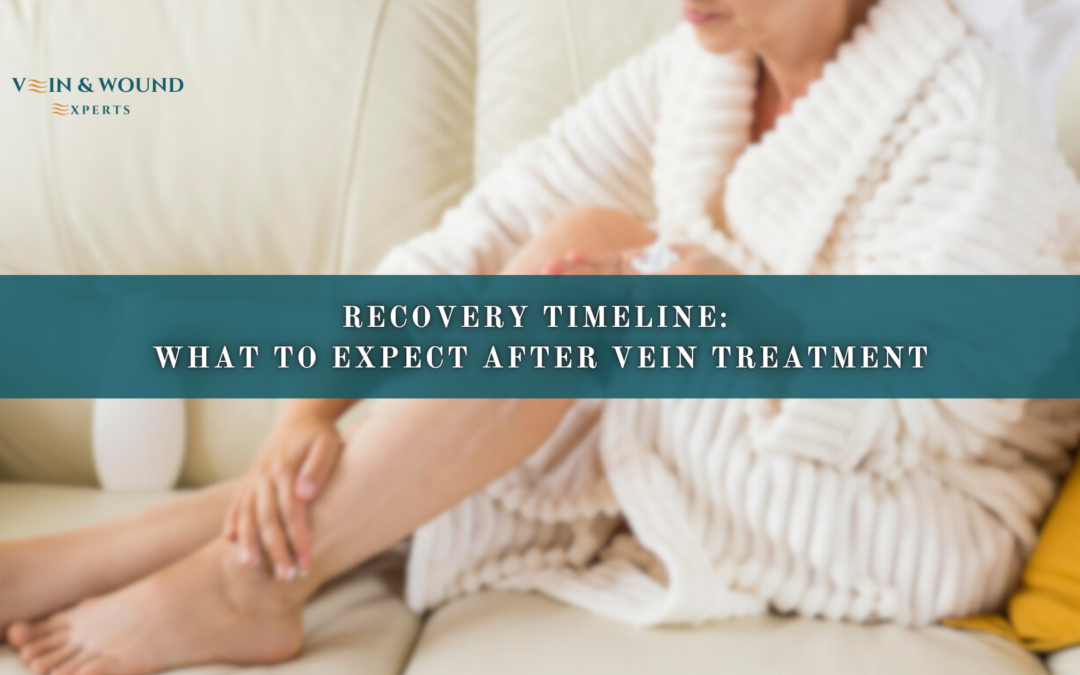What Recovery Looks Like After Vein Procedures 🩺💉

Undergoing vein treatment can be a major step in addressing common vein conditions like bloated leg veins. Whether you’ve opted for laser-based procedure, sclerotherapy, or a more traditional surgery, understanding the recovery process is key to achieving the best possible outcomes.
The First Steps After Treatment 🛌
Immediately after your treatment at the vein clinic, you may feel some discomfort, but this is a normal part of the healing process. If you’ve had laser surgery for varicose veins treatment, you may notice minor swelling, bruising, or redness around the treated area. These are temporary and typically subside within a few days.
It’s important to follow the post-treatment instructions given by your vein experts to ensure a smooth recovery. Some of the immediate steps may include wearing compression stockings to reduce swelling and encourage proper blood circulation, along with avoiding strenuous physical activity.
Healing Timeline: What to Expect 📅
First Week: Initial Recovery Phase
During the first week after swollen leg veins therapy, you might still experience some discomfort, but this should not interfere significantly with daily activities. Most people can return to work and resume light activities within a few days. However, strenuous activities such as heavy lifting, running, or prolonged standing should be avoided.
2–4 Weeks: Gradual Improvement
After two to four weeks, you should notice significant improvement. Swelling and bruising will likely reduce, and the treated veins may start to shrink. It’s essential to keep wearing compression stockings and follow up with your vein centre for a check-up to ensure proper healing.
1–3 Months: Full Recovery
Most patients are fully recovered within one to three months. By this time, your veins should be visibly improved, and any discomfort you experienced earlier should be gone. However, it’s important to continue with any prescribed follow-up care, which may include light exercises and occasional use of compression garments.
Dos and Don’ts During Recovery ✅❌
✅ Dos:
-
Follow Your Specialist’s Advice: Always adhere to the instructions provided by your vein specialists. This may include wearing compression stockings, elevating your legs, and taking prescribed medications to minimize inflammation.
-
Stay Active: Light walking can help promote circulation and reduce the risk of blood clots. However, avoid vigorous exercises that might strain your treated veins.
-
Maintain a Healthy Diet: Eating a balanced diet that supports vascular health can aid the healing process. Foods rich in antioxidants, vitamins, and fiber will help improve circulation and promote overall well-being.
-
Monitor for Any Complications: Keep an eye out for signs of infection, increased swelling, or new symptoms. If you experience any concerning changes, contact your vascular health center immediately.
❌ Don’ts:
-
Avoid Strenuous Activities: As tempting as it may be to jump back into your regular workout routine, avoid high-impact exercises such as running, jumping, or lifting heavy weights for at least a few weeks after your procedure.
-
Don’t Skip Follow-Up Appointments: Your post-treatment check-ups are vital for ensuring proper healing. Be sure to keep all follow-up appointments with your vascular surgeon to track your progress.
-
Avoid Hot Environments: Steam rooms, hot tubs, and intense heat can increase swelling. Avoid exposing your treated areas to heat sources until your doctor gives the green light.
Potential Side Effects and How to Manage Them ⚠️
While most patients experience minimal side effects, some may encounter mild symptoms as their veins heal. Here are some potential side effects and tips for managing them:
-
Bruising: Mild bruising around the treated area is normal. Apply ice packs and elevate your legs to minimize bruising and swelling.
-
Swelling: Swelling in the legs can occur but should gradually subside. Elevating your legs above your heart and wearing compression stockings can help.
-
Skin Discoloration: Some patients experience temporary skin discoloration after treatment. This usually fades within a few weeks.
-
Pain or Tenderness: Mild pain or tenderness is common but should improve as the veins heal. Over-the-counter pain relievers can help manage this discomfort, but consult your doctor before taking any medication.
Long-Term Results and Maintaining Healthy Veins 🌱
After completing your recovery, the final step is to maintain healthy veins to prevent future issues. Following your varicose leg veins treatment, lifestyle changes like regular exercise, maintaining a healthy weight, and elevating your legs during rest will help support vein health. Avoid sitting or standing for long periods, and incorporate regular physical activity to boost circulation.
If new symptoms arise or if your veins begin to change again over time, don’t hesitate to contact your vein care center. Continued check-ups with phlebologist will help you stay on top of your vascular health.
Smooth Recovery After Vein Treatment

The road to recovery after varicose leg veins treatment is manageable and typically straightforward when you follow the advice of your medical team. Whether you’ve had laser surgery or another procedure, adhering to post-treatment instructions and staying mindful of your health will ensure the best results. Remember, healing is a gradual process, and with proper care, you can look forward to improved leg health and long-lasting results.
Andy Scarifi
Position
